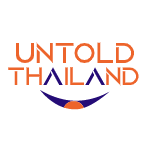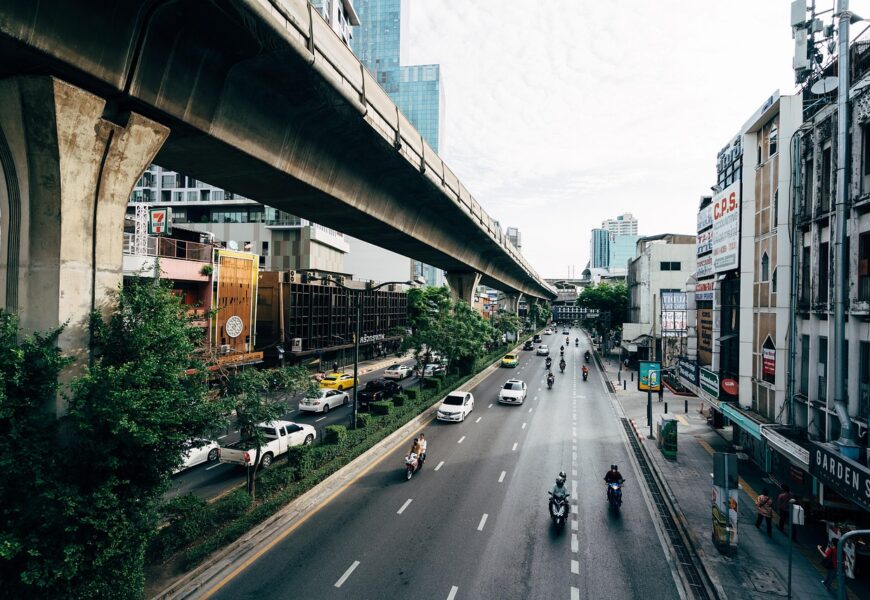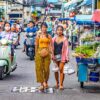Thailand, a vibrant Southeast Asian nation, boasts an incredible array of cities that showcase the country’s rich cultural heritage, modern dynamism, and extraordinary diversity. From bustling metropolitan centers to historic cultural hubs, Thailand’s urban landscapes offer travelers and residents a remarkable journey through tradition and innovation. Each city presents a unique tapestry of experiences, blending ancient temples, cutting-edge architecture, world-renowned cuisine, and warm hospitality that defines the Thai national character. Understanding these urban centers provides profound insights into Thailand’s complex social, economic, and cultural landscape, revealing a nation that seamlessly bridges its storied past with an ambitious, forward-looking future.
Bangkok: The Vibrant Capital of Thailand
Bangkok stands as Thailand’s most dynamic and internationally recognized city, a metropolis that perfectly encapsulates the nation’s complexity and energy. With over 10 million residents, this sprawling urban center serves as the political, economic, and cultural heart of Thailand. The city’s landscape is a mesmerizing blend of ultra-modern skyscrapers, historic Buddhist temples, and bustling street markets. Iconic locations like the Grand Palace, Wat Phra Kaew, and the vibrant Chatuchak Weekend Market attract millions of international visitors annually, offering glimpses into Thailand’s rich cultural heritage and contemporary urban life.
Bangkok’s transportation infrastructure is equally impressive, featuring an extensive BTS Skytrain system, comprehensive metro networks, and traditional tuk-tuks that weave through its intricate street system. The city’s culinary scene is world-renowned, with street food vendors and high-end restaurants offering an incredible range of flavors that represent Thailand’s diverse gastronomic traditions. From luxurious shopping centers like Siam Paragon to historic neighborhoods like Chinatown, Bangkok represents a microcosm of Thailand’s remarkable ability to honor tradition while embracing modernity.
Chiang Mai: The Cultural Jewel of Northern Thailand
Located in Thailand’s mountainous northern region, Chiang Mai represents a dramatically different urban experience compared to Bangkok. As the historical capital of the Lanna Kingdom, this city is renowned for its extraordinary cultural preservation, stunning ancient temples, and profound spiritual significance. With a population of approximately 200,000, Chiang Mai offers a more relaxed, contemplative urban environment that attracts digital nomads, cultural enthusiasts, and travelers seeking authentic Thai experiences. The city’s historic old town, surrounded by ancient walls and moats, contains over 300 temples, representing one of the most concentrated collections of religious architecture in Southeast Asia.
Chiang Mai’s economy has evolved beyond traditional agriculture and handicrafts, emerging as a significant technology and creative hub. The city hosts numerous international conferences, supports a growing startup ecosystem, and has become increasingly attractive to global professionals seeking a high quality of life. Its proximity to stunning natural landscapes, including doi inthanon national park, provides residents and visitors with exceptional opportunities for outdoor exploration and cultural immersion.
Phuket: Thailand’s Premier Coastal Metropolis
Phuket represents Thailand’s most famous island city, a tropical destination that combines stunning natural beauty with sophisticated urban infrastructure. As Thailand’s largest island, Phuket attracts millions of international tourists annually, offering world-class resorts, pristine beaches, and a cosmopolitan atmosphere that blends Thai traditions with global influences. The city’s historic Old Town showcases remarkable Sino-Portuguese architecture, reflecting its complex cultural heritage and historical trading significance. Modern Phuket features advanced medical facilities, international schools, and a robust tourism-driven economy that supports numerous economic sectors.
Beyond tourism, Phuket has developed significant marine industries, including fishing, maritime services, and sustainable aquaculture. The city’s international airport serves as a crucial transportation hub, connecting Thailand’s southern region with global destinations. Its multicultural population, comprising Thai, Chinese, Malay, and international residents, creates a uniquely diverse urban environment that exemplifies Thailand’s openness and adaptability.
Ayutthaya: The Historic Ancient Capital
Ayutthaya, located just north of Bangkok, represents a living museum of Thailand’s extraordinary historical legacy. As the former capital of the Siamese Kingdom from the 14th to 18th centuries, this UNESCO World Heritage site offers unparalleled insights into Thailand’s architectural and cultural evolution. The city’s extensive temple complexes, featuring intricate stone structures and remarkable Buddhist iconography, attract historians, archaeologists, and cultural enthusiasts from around the world. Ayutthaya’s historical significance extends beyond its architectural treasures, representing a critical period in Thailand’s national development.
Modern Ayutthaya balances its historical importance with contemporary urban development, supporting agricultural research, educational institutions, and cultural preservation efforts. The city serves as an essential educational center, with numerous universities and research facilities exploring Thailand’s rich historical and cultural traditions.
Conclusion: Thailand’s Urban Diversity
Thailand’s cities represent far more than mere geographical locations; they are living narratives of a nation’s complex journey through time. From Bangkok’s metropolitan dynamism to Chiang Mai’s cultural richness, each urban center tells a unique story of tradition, innovation, and resilience. These cities demonstrate Thailand’s remarkable capacity to honor its historical roots while simultaneously embracing global opportunities. Travelers and researchers alike will find endless fascination in exploring these urban landscapes, each offering profound insights into Thailand’s national character, economic potential, and cultural complexity.









